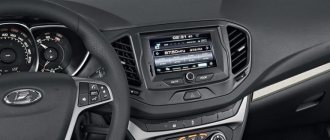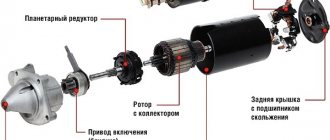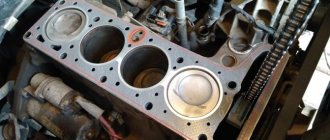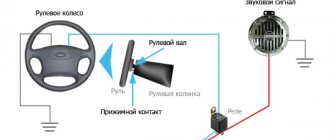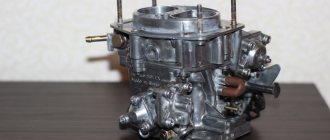You are the owner of a Chevrolet Niva, a stylish modern off-road vehicle with high ground clearance, impenetrable suspension and permanent all-wheel drive. Your car has a lot going for it to drive great. There is only one thing missing - a powerful, high-torque engine.
Indeed, a measly 80 “horses” and 130 Nm of torque are negligible for a car with a curb weight of 1350 kg and with large losses in the all-wheel drive transmission.
You are well aware of the consequences of a deficiency in engine traction characteristics.
In the city, it causes difficulties when driving a car in traffic jams and maneuvering in heavy traffic.
On the highway there are problems with overtaking vehicles in front.
When driving off-road in low gears, the engine often stalls.
We offer a modern, simple and affordable way to rid a car of these shortcomings - boosting the engine using a turbocharging system.
To put it simply, a turbine for a Chevrolet Niva
Turbo kit for Chevrolet Niva (installation of a turbine on a Chevrolet Niva)
Consultation and order by phone:
+7
Turbocharging gives the engine a large reserve of thrust and elasticity.
Description
Tests on a dynamometer showed that the rated power of the Chevrolet Niva turbo engine increases to 105 hp.
The maximum torque increases to 168 Nm, and a significant increase in torque is observed in almost the entire engine speed range. As a result, the car is transformed: its dynamic characteristics, maneuverability, all-terrain qualities and ease of operation are significantly improved.
Besides:
- turbocharging allows you to save fuel due to higher efficiency and greater torque of the turbo engine;
- turbocharging improves the environmental and acoustic characteristics of the engine.
- The supercharging system is supplied in the form of a turbo kit completely ready for installation, in packaging and with detailed installation instructions;
- installation of the system does not require changes to the engine design and significant re-equipment of the engine compartment;
- installation of a turbo system can be performed in any auto repair shop, and with appropriate skill, by the car owner himself;
- The original Garrett turbine included in the turbo kit has a large reserve of boost pressure, which allows you to further increase the degree of boost and give the car new qualities.
- avoid the risk of detonation without resorting to “decompressing” the engine or switching to high-octane gasoline;
- use standard elements of the control system (sensors, injectors, etc.);
- keep the life of the engine and transmission unchanged.
Advantages of the proposed forcing method:
Turbocharging gives the engine a large reserve of thrust and elasticity.
To date, about 300 turbo kits have been sold. The first of them have already worked for about five years. Chevy Turbo owners unanimously note a significant improvement in vehicle dynamics. The car starts easily, maneuvers confidently in city traffic, and in second gear overcomes difficult areas that a standard car can only do in first gear. At the same time, no complaints were noted regarding the operation of the turbocharging system, as well as a reduction in the service life of the engine or transmission units.
After analyzing possible solutions, the choice was made in favor of the so-called “soft” boost, that is, boost at moderate excess pressure (about 0.4 bar). Similar systems are widely used, for example, in SAAB petrol engines of the Ecopower family. With an excess pressure in the inlet of 0.25 to 0.55 bar, the motor torque reaches its maximum already at a rotation speed of 1800-2100 min-1. Thanks to this, they are high-torque, economical, comply with the latest environmental standards and give SAAB cars excellent dynamics.
Moderate forcing allows you to achieve your goal and at the same time obtain the following benefits:
The turbocharger that is optimal in terms of technical characteristics, the Garrett GT17, was selected as the supercharging unit. This is a serial, field-tested turbine that is used in gasoline engines of many automakers. Features include a built-in bypass valve and a cooled central bearing housing.
The turbocharger is aggregated with the engine without modification of the manifolds. The turbine is connected to the exhaust manifold through an adapter unit. To connect it to the exhaust system, a specially made fragment of the exhaust pipe is used. Turbine lubrication and cooling are provided by appropriate engine systems. Oil and antifreeze are supplied to the housing using flexible tubes reinforced with metal braid. The turbine is covered with a heat-reflecting screen. The air duct from the air filter to the compressor is made using partial use of the pipes of the standard intake system. The turbo system includes an anti-surge (unloading) valve that prevents damage to the compressor when the throttle valve is suddenly closed, and a safety valve that prevents the engine crankcase from being pressurized through a large branch of the ventilation system. Installation of the system is carried out without major changes to the layout of the engine compartment. All you need to do is move the fuel vapor adsorber of the fuel tank ventilation system to another location.
To ensure correct operation of the turbo system, changes have been made to the standard program of the engine control system. The adapted version of the software is recorded on electronic media to allow flashing of the control unit.
The turbo kit, packed in a box, includes all the necessary hardware, from the turbocharger to the bolt, software for reprogramming the standard controller and step-by-step installation instructions with photographs.
Pistons from Niva are often used to build turbo 16-valve engines. Numerous experience has shown that you can safely install a turbine on a Niva engine and inflate it to 0.7-1 bar without significant modifications to the block and cylinder head. The original engine really lacks power, especially the 5-door one. The loaded weight is 1425 kg, and the engine power of 1.7 liters is only 83 horsepower with a peak torque of about 4000 rpm. 130-140 horsepower would be more than enough for comfortable movement in any conditions.
Interested owners go in different ways, some prefer to modify the naturally aspirated engine - boring the cylinder head, replacing the camshaft, modifying the exhaust system, a larger diameter throttle body, while others follow the supercharging path. However, in both cases, the owners are faced with the problem of a chain reaction - a significant increase in engine power reduces the life of everything that comes after it, including the first gearbox. The Niva engine is designed for a gearbox, since this is the weakest point; it is designed for a maximum of 140 Nm of torque.
In general, everything is clear with turbos, there are many workshops that specialize in turbo Zhigulis, this is due to the boom in winter drifting. In general, you need to pay attention to the following points - the original fuel pump is weak, it needs to be changed, at least 120 liters, you need more efficient injectors, for example, from the Volga, you need to choose spark plugs with a high heat rating. The exhaust manifold can be purchased ready-made for the Niva.
Let’s move on to the most important thing, or why the car we’ll be talking about is an example of a proper turbo Niva. Instead of the original gearbox, Getrag 240 mechanics were installed. The gear ratios are quite close, the only significant difference is in the main pair of 3.9 for the factory one versus 3.15 for Getrag. The main difference is the torque that the boxes can hold; if the original one is only 140 Nm, then the Getrag 240 holds more than 245 Nm of torque.
To install it, you need to make an adapter plate, take a clutch disc from a BMW, a basket from a Chevrolet Niva, make an exhaust shaft, or rather, merge parts of the BMW and the original one from the Niva.
Following the gearbox, the owner replaced the rear axle. Instead of the original one, a bridge from the Volga 31029 was taken. Why this particular bridge? A suitable gear ratio, thicker axle shafts, a massive pair, and given the turbo engine power of 175 horsepower with a torque of more than 200 Nm, this is only a plus - it’s harder to break. The Volga bridge is 10 cm shorter, this is important to take into account; the owner had to install spacers. Taking advantage of the moment, the rear brakes were replaced with disc ones.
Impressions - a box with excellent, clear switching, much quieter than the original one. The engine began to pull much better, the turbine began to pick up already from 2200 rpm, and the torque was even almost up to 5000 rpm. For more details about the car, you can look at the Bulletin Sheet.
The TurboEngineering company presented an industrial version of a turbocharger designed for the Chevrolet Niva, and promises increased low-end traction and improved dynamics, but there is no information about fuel consumption.
The greatest dissatisfaction among Chevrolet Niva owners is the engine, in particular the lack of traction. The installed engine does not allow you to fully realize all the capabilities of the SUV.
Two Moscow companies Dias-service and TurboEngineering have joined forces to solve this shortcoming. The specialists of these companies proposed a simple but effective way to solve the problem - turbocharging. The basis was the GARETT GT-17 turbine, which, with its characteristics, most suited the requirements.
We modernize the engine by installing the above-mentioned turbine. After modernizing the engine, the acceleration time to hundreds is reduced by 5 - 6 seconds. The engine pulls well on marshy soil and loose snow. The requirements for fuel quality remain the same; the octane number of gasoline must be at least 95.
Turbocharging not only increases engine power, but also allows you to save fuel, which in turn improves environmental performance, which is given special attention today.
Installing a turbocharger increases power by 30% and increases torque from 120 to 170 Nm. No tendency of the engine to overheat was detected.
The car service offers the installation of turbocharging on your fuel-injected Nivas, developed by Turbo Engineering and Diaz-Service.
The turbines we sell are used for Chevrolet Niva cars and fuel-injected Nivas. Power increase = 30%!
Cost of turbine and installation = 67 thousand rubles.
The specialists of these companies have solved the priority task of boosting - increasing engine torque at low and medium speeds. Turbocharging not only increases liter power and torque, but also improves fuel efficiency. In turn, saving fuel leads to improved environmental performance, which is given special attention in our time. Finally, equipping the engine with a turbocharger (turbine) increased the active safety and comfort of the car.
The GARRETT GT17 turbocharger was taken as the basis. According to its characteristics, it most fully meets the requirements. As a result of the work carried out, the engine torque characteristics were significantly improved (35% increase in the area of low crankshaft rotation speeds).
The engine has passed bench tests to verify:
1. Increased power to 105 hp. (according to the “state” – 80 hp) at an ambient temperature of +30°.
2. Increase in torque from 120 to 170 Nm.
To preserve the service life of the engine and transmission, the absolute value of torque does not exceed the manufacturer's specifications for transmission parts and components.
The capabilities of the modernized power unit allow you to reduce the acceleration time from 0 to 100 km/h by 5-6 seconds, move “tightly” on heavy soils and deep snow on the “upper” row of the transfer case, constantly use the 5th gear of the gearbox, and install larger wheels without any problems diameter and additional equipment.
The requirements for fuel quality remain the same - gasoline with an octane rating of at least 95.
Maintenance is standard for turbocharged gasoline vehicles.
The power unit has no tendency to overheat.
The car service offers the installation of turbocharging on your fuel-injected Nivas, developed by Turbo Engineering and Diaz-Service.
The turbines we sell are used for Chevrolet Niva cars and fuel-injected Nivas. Power increase = 30%!
The specialists of these companies have solved the priority task of boosting - increasing engine torque at low and medium speeds. Turbocharging not only increases liter power and torque, but also improves fuel efficiency. In turn, saving fuel leads to improved environmental performance, which is given special attention in our time. Finally, equipping the engine with a turbocharger (turbine) increased the active safety and comfort of the car.
The GARRETT GT17 turbocharger was taken as the basis. According to its characteristics, it most fully meets the requirements. As a result of the work carried out, the engine torque characteristics were significantly improved (35% increase in the area of low crankshaft rotation speeds).
The engine has passed bench tests to verify:
1. Increased power to 105 hp. (according to the “state” – 80 hp) at an ambient temperature of +30°.
2. Increase in torque from 120 to 170 Nm.
To preserve the service life of the engine and transmission, the absolute value of torque does not exceed the manufacturer's specifications for transmission parts and components.
The capabilities of the modernized power unit allow you to reduce the acceleration time from 0 to 100 km/h by 5-6 seconds, move “tightly” on heavy soils and deep snow on the “upper” row of the transfer case, constantly use the 5th gear of the gearbox, and install larger wheels without any problems diameter and additional equipment.
The requirements for fuel quality remain the same - gasoline with an octane rating of at least 95.
Maintenance is standard for turbocharged gasoline vehicles.
The power unit has no tendency to overheat.
Advantages of a turbo kit for Niva
The turbo kit installed on the base Chevrolet Niva engine significantly improves the “behavior” of the car in various road conditions.
Equipping the Niva with a turbo kit significantly changes the performance of the car:
- Dynamic characteristics are improved due to an increase in power of 30% or more.
- The power of the base power unit increases to 105-120 hp. With.
- The maximum torque of the engine increases to about 170 Nm, and the increase is observed in almost the entire speed range. To preserve engine life, the maximum torque does not exceed the technical conditions established by the manufacturer.
- The engine becomes more economical due to increased efficiency and increased torque, especially at low speeds.
- Fuel requirements do not change - the engine still “consumes” 95 gasoline.
- Due to the increased power, it becomes possible to install additional equipment and wheels of larger diameter.
- Acoustic noise during engine operation is reduced, which increases travel comfort.
- The environmental friendliness of the car increases due to a decrease in the volume of harmful substances in the engine exhaust.
Boosting the engine in the form of installing a ready-made turbo kit on a Chevy Niva also has its advantages over other methods of increasing power:
- The turbocharger is completely ready for installation and has complete installation instructions. There is no need to search for and purchase individual kit parts.
- Installation of the turbine does not require a large amount of work and can be performed in any car service center. If you have sufficient repair skills and knowledge of how cars work, the owner himself can handle it.
- Installing a turbo kit does not require changes to the engine design - increasing the piston stroke or cylinder diameter by “boring”, etc. Also, significant re-equipment of the car’s engine compartment is not required.
All this makes installing a turbine on a motor a fairly simple and effective way to increase engine power compared to other options.
Operating principle and ways to increase power
Installing a turbine on a Niva is one of the legal options to increase the power rating. Today it can be increased in the following ways:
- Change towards increasing engine displacement;
- Increase in crankshaft rotation speed.
Both methods are neither simple nor easy.
, since it will be necessary to temporarily dismantle the engine and manipulate it. But mechanical engineering experts have developed another method - increasing the mixture in the combustion chamber.
Despite the positive aspects, it is necessary to treat this tuning with all responsibility, since you will have to supply the car only with fuel with a high octane number and undergo timely maintenance.
Power increase scheme:
- Installation of a compressor, which is driven by a crankshaft pulley;
- Installation of a turbine, if a diesel option is available.
* see the article “Which is better, a compressor or a turbine”
With high-quality installation, the effect is immediately noticeable:
the engine runs quieter, there is no detonation, the toxicity level is much lower than normal. The compressor will reduce your acceleration by 5.0 seconds, but there will be a jerk from the first meters, unlike a turbine with its turbo lags. After you turn off the engine, the turbine will still continue to rotate for some time, and the oil temperature heats up under the influence of heat transfer. In this way, the liquid quickly loses its properties.
Prices for turbo kits
The cost of a turbo kit for a Chevy Niva starts from 30 thousand rubles. and can reach up to 80-100 thousand . This cost includes not only the turbocharger itself, but also the entire set of components necessary to install supercharging on the power unit. At the same time, various components of the kit can be from different manufacturers - the assembly of a turbo kit for a Chevy Niva is usually carried out by domestic companies, which select the most efficient and suitable parts for the Niva.
There are several options for turbo kits in different price categories on the market . The most popular kits include a Garrett GT17 turbine made in Germany.
SUV owners can order and install the following turbo kits on a Chevrolet Niva:
- turbo kits based on the Garrett GT17 turbine, modified for VAZ engines, costing from 30 to 80 thousand rubles;
- turbo kit TuningSport 0.5 bar with an “Auto Turbo” rubber compressor of the PK 23-1 series costing from 30 thousand rubles;
- turbo kit based on the Mitsubishi TD04L compressor costing from 50 thousand rubles;
- turbo kit SUPERCHARDGED 0.5 bar from 32 thousand rubles;
- Autoturbo Light kit for Chevrolet Niva from 26 thousand rubles. and etc.
As you can see, the price range is quite wide .
Attention! The specific cost largely depends on the country of origin of the supercharger - turbochargers made in Europe and Japan are more expensive than their counterparts from China.
Also, pricing is influenced by the degree of boost - the more the kit increases the engine power, the more expensive it is.
Read news about the new field
- Chevrolet Niva: turbo kit, turbo kit for Chevy Niva
- Chevrolet Niva: turbo kit, turbo kit for Chevy Niva || Turbo Niva engine
- Disassembly and assembly of the Niva 2121, VAZ 2131 engine
- Lada 4×4 Bronto - review and comparison with the regular Niva
- What kind of diesel engine can be installed on the Niva?
- Engine 21214 Features characteristics and tuning
- Niva Lynx buy in Vladimir - prices for the new Lada “Bronto” (Niva Pickup)
- Niva urban engine
Read news about the new Niva
- The modernized Lada Niva Legend (4x4) 2021 was shown on the Internet
- Lada 4×4 Bronto - sales stopped, new details » Lada.Online - all the most interesting and useful about LADA cars
- Description of the instrument panel Lada 4×4 (VAZ 2121, 2131) » Lada.Online - all the most interesting and useful about LADA cars
- Chevrolet Niva gasoline consumption per 100 km
- Buy LADA (VAZ) 2131 (4×4) 2022 in Rostov-on-Don, low price for Lada 2131 (4×4) 2022 on the Avto.ru website
- Fuses Niva 21214 injector «
- The new large Lada 4×4 Niva “Bigster” 2021-2022 based on the Dacia Bigster was shown for the first time. The SUV has changed beyond recognition
- New Niva Chevrolet Lux 2022 - review of GLC equipment
DIY installation
Installing a turbo kit on a Chevy Niva requires certain skills in car repair , so it is recommended only for experienced car owners. On the other hand, installation in a car service can cost several tens of thousands of rubles. Therefore, to save money, it makes sense to do all the work yourself.
The installation sequence of the turbo kit on a Chevrolet Niva is as follows:
- First, remove the protective casing from the engine. Afterwards, you need to make sure that all the intake and exhaust systems of the power unit are not damaged or contaminated with carbon deposits, waste oil or foreign objects.
- If necessary, the oil, oil and air filters are simultaneously replaced according to the manufacturer's recommendations.
- On early Chevrolet Niva models, installing a turbocharger will require moving the fuel filter.
- Next, the exhaust pipe of the muffler is dismantled.
- The engine sump is dismantled, a fitting for draining oil from the turbocharger is installed in it, but not tightened. Then the pallet is mounted back.
- The washer reservoir and adsorber are being transferred.
- An adapter is installed on the exhaust manifold, and heat-reflecting screens are also mounted. All parts are included in the turbo kit.
- Preliminary installation of a new intake pipe is carried out without securing it.
- Next, a turbocharger is installed on the exhaust manifold along with pipes for supplying and draining oil and coolant. The turbocharger must be filled with fresh engine oil through the supply hole.
- The exhaust pipe of the muffler is completely secured.
- Then you should move the inlet of the crankcase ventilation system and install air ducts from the air filter to the turbocharger. After this, the compressed air supply duct and the anti-surge valve line are installed.
- Then you need to turn off the fuel supply and turn the engine starter until oil appears at the location of the supply fitting. After this, tighten the fitting. You should crank the starter of the power unit again until the oil pressure indicator on the instrument panel goes out.
- The motor protective casing is installed.
- Then start the engine and let it idle for 10-20 minutes. This way you can ensure that there are no leaks and that the turbocharger is securely mounted.
Attention! When installing a turbocharger, the use of adhesive-sealant is strictly prohibited.
Complete installation of a turbo kit does not mean that the car can no longer be used . Additionally, you will need to dismantle and reflash the electronic engine control unit (ECU).
In the first 500 km after installing the turbocharger, it is not recommended to give the engine full load.
Attempts by the plant to install diesel
The manufacturing plant made attempts to install a diesel power plant on the Niva-2121 car. It was planned to use a 1.5-liter turbocharged engine. Cars equipped with such engines that underwent testing turned out to be low-power. But attempts to equip all-wheel drive with a promising internal combustion engine continued. The Chevrolet Niva diesel car, which turned out to be unpromising, was equipped with a large-volume engine.
Soon the factory workers abandoned attempts to equip the SUV with a diesel power unit. The model remained out of series.
Chevrolet Niva SPT › Logbook › Garrett GT17 turbine and small things.
Sometimes it happens that there are incidents in the construction of a car, well, like cactuses, this is of course not on stumps for 11 months, these incidents consist approximately in the fact that everything is installed, everything works, well, with the words, okay, let’s tweak it a little and it will be fire, but there won’t be fire, but there will be repairs)) what? more on that later. In the meantime, there were sketches of the pieces of iron. At this time everything has been removed, the turbo is undergoing revision, all that remains is to buy a couple of things for her and she is like a cucumber).
Let's start with the main thing, with the turbine
A spider, a spider for a standard manifold, has its own advantages, namely, it is placed in a bolt and does not rest anywhere. The owners of turbochargers will understand me here.
Bosch 480cc injectors, Article: 0 280 156 127
To connect the force, you need to make 4 adapters to connect to our system. Therefore, we buy mom pads for force and dad pads for tazoforce and stupidly solder them.
Optics
Optics are subject to strict restrictions on alteration. Only the installation of fog lights and daytime running lights is allowed, and then with certain conditions at the installation site. There is a very strict restriction on the color of lighting devices: nothing white or red can be used. These colors are already assigned to the head optics and brake lights. But if you look for loopholes in the technical regulations, then you can talk about illuminating the bottom, although in this case it is necessary to use only permitted colors.
The installation of non-standard, tuned optics is also permitted, but provided that these optics have passed certification, otherwise the car may be “turned down” at the inspection station. But installing LEDs in standard optics is prohibited. Or rather, it is allowed if the manufacturer allows it, but Avto25.ru journalists could not remember a single such case. It is clear that when the optics are initially designed for diodes, then they can and should be installed, but if not, then no.
A subtle point with xenon. Self-installation is prohibited. It is self-made in the sense that you cannot place xenon in headlights whose markings begin with the letter H. But, in principle, if you buy special headlights for xenon (markings begin with the letter D), equip the car with a headlight washer and a corrector, then such a modification is quite possible register. And, of course, the owner should not worry if the xenon on the car is factory.
For honest xenon you need special headlights
see also
Comments 12
Personally, I don’t understand anything yet)))
So what, with a turbine?)
It was fine until the checkpoint burped. Then I didn’t decide to add a little more, and the turbine cartridge started leaking))) In general, this was a test version)
It’s okay, play tricks and it will be great without ryge)
Well, now we still need to make the capital of the internal combustion engine better, and already make the piston. On three cylinder head gaskets this is of course normal, but the downside is that it blows)
It was fine until the checkpoint burped. Then I didn’t decide to add a little more, and the turbine cartridge started leaking))) In general, this was a test version)
Checkpoint? This one is still evil. How much boost did you have? Is the engine stock or revved up?
1.6 there were 5 leaks, the last stage was 3 gaskets, but either I was already tired or the bolts were stretched, I don’t know, it blew out at 1.1. After which the decision was made to simply sharpen the piston. It's been hammered, everything has been removed, the engine is living out its life. For now I’m thinking of either buying a block and assembling it on it, or buying a flea stock. Set it up for yourself, take off yours and make your own. It is quite possible that I will add 1 cm to the height of the block.
You're tough. Kula 1.6 bar 8-() there the flow rate will be like that of an Escalade. I'm eating with happiness with 0.4 rushing like a bullet. On stock wheels 80-120 in 9.42. That's right - sharpen the pistons. Gaskets are porn (
I don’t care about the consumption as such, because at 0.5 you can constantly drive to the floor and guzzle gas, or at 1 you can drive dynamically but at the same time fit into 12-13 liters. A lot of it depends on the style, I get an average of 13.5 liters of 95 on stock, and on the same turbo in 1 nick I got 12, simply because I wasn’t even driving with half the pedal, but at the same time it was already dynamic. Well, you yourself noticed that in the same modes as in the atmosphere, the turbo runs better and the consumption has dropped. Because efficiency has increased
Agree. This is true
1.6 there were 5 leaks, the last stage was 3 gaskets, but either I was already tired or the bolts were stretched, I don’t know, it blew out at 1.1. After which the decision was made to simply sharpen the piston. It's been hammered, everything has been removed, the engine is living out its life. For now I’m thinking of either buying a block and assembling it on it, or buying a flea stock. Set it up for yourself, take off yours and make your own. It is quite possible that I will add 1 cm to the height of the block.
There is also an option about a centimeter. I thought about cutting off the top of another block and sanding everything down. Pull, bore and sleeve. Then the connecting rod can be longer and the pistons are correct and the CV can be at 88 or even 90, there will be a normal RS and inflate from above
And in the end there will be expensive non-resource shit. And how it will go will be a question. Because 88-92 all knees are indian, with inflation and forging, any detonation will break the knee. And there will be no more walls at the bottom. Stock or 84 knee limit
Finally, the fierce limit is lightweight 86, but you will find his dick, rarity
Source: www.drive2.ru
Turbocharging on Chevy Niva. Deadness pill
Turbocharging on Chevy Niva. Deadness pill
The volume was gradually increased - 1.5–1.6, finally - 1.7 liters, the carburetor was replaced with injection (the most decisive achievement in the entire history of the engine). It was this engine that was equipped with the latest “classic” Niva 21214. Almost without changes, it migrated to the new model - 2123, Chevy Niva.
The old engine did not suit all drivers, especially Chevy owners. Low power and low torque sometimes simply irritate the driver. In addition, the riding engine does not tolerate off-road driving, “at low speeds” - it stalls. And while AVTOVAZ is introducing a 2-liter Opel engine designed to save the situation, some are resorting to tuning.
The market offers several options for boosting Niva engines - from the classic replacement of shafts, pistons, injectors, reflashing, modifying the intake and exhaust to installing superchargers. Not long ago, the capital company BiPower developed a tuning program to adapt an imported mechanical supercharger to the 2123 engine. And everything would be fine if not for the price - almost half the cost of the car. Other offers of this type are also not cheap.
Installation of turbine (turbocharging) bar HP on Niva and Chevrolet Niva
I buy Nivas from time to time, this one came like this. A car with an interesting destiny, the first owner is Autoreview magazine.
The car underwent comparative tests with Renault Duster. They were frozen in a chamber, scratched and placed in a salt chamber, driven off-road, etc. At this point the tests ended, Shniva was bought by an employee of the Autoreview restoration workshop, and he rode to the dacha for a year.
I had to look in the city for someone else who could help me with this problem. Niva Chevrolet Turbo is not enough in our Niva Chevrolet Turbo, but I found someone who could configure it, and he already had experience in building turbo shnivy.
Turbocharging on Chevy Niva. Deadness pill
I made an appointment, it was not so easy to get to see my miracle. The meeting took place, the engine was inspected, defects were indicated and what needed to be redone, everything concerned the small details of installing pipes and a bypass valve. We got to the brains, connected. Verdict - Bosch cannot be set up normally, you need January 7. Well, the brains themselves are easy to install, the old ones were removed, new ones were installed, before installing the program already working in them, they screwed another lambda probe into place, the Niva Chevrolet Turbo outputs indications of the mixture quality on the laptop, connected and drove.
An hour's drive around the city and outside the city and the car drives briskly, acceleration is satisfactory at the low end and on the Niva Chevrolet turbo, this is not a Subaru of course, but for a Niva this is a whole abyss.
The inflation was done 0. You will say slowly or whether it was worth the trouble.
The car has lightness, dynamic acceleration, the Niva Chevrolet Turbo feels and compares with a chip-based Priorik. For the first month I just wanted to drive and drive, straight from the traffic light to the floor. Minus Niva Chevrolet turbo gearbox, 1st, 2nd, very short gears and in fact the turbine does not have time to inflate, 3rd, 4th and 5th are another matter!
Outside the city, if you don’t strain the engine, it picks up very quickly and goes without straining; if you hold the gas, it was just a pity to accelerate further because the gearbox didn’t allow it, and yet in the field it’s scary to drive at this speed and not confident, although the car holds the road . Well, the whole car is built, rebuilt, everything works as it should.
I put it on a lift and changed the oil in the engine, gearbox, axles and transfer case. This was at 15 thousand.
Turbo kit Niva Chevrolet
You are the owner of a Chevrolet Niva, a stylish modern off-road vehicle with high ground clearance, impenetrable suspension and permanent all-wheel drive. Your car has a lot going for it to drive great. There is only one thing missing - a powerful, high-torque engine.
Indeed, a measly 80 “horses” and 130 Nm of torque are negligible for a car with a curb weight of 1350 kg and with large losses in the all-wheel drive transmission.
You are well aware of the consequences of a deficiency in engine traction characteristics.
In the city, it causes difficulties when driving a car in traffic jams and maneuvering in heavy traffic.
On the highway there are problems with overtaking vehicles in front.
When driving off-road in low gears, the engine often stalls.
We offer a modern, simple and affordable way to rid a car of these shortcomings - boosting the engine using a turbocharging system.
To put it simply – a turbine for a Chevrolet Niva
Turbo kit for Chevrolet Niva (installation of a turbine on a Chevrolet Niva)
Consultation and order by phone:
+7
Turbocharging gives the engine a large reserve of thrust and elasticity.
Description
Tests on a dynamometer showed that the rated power of the Chevrolet Niva turbo engine increases to 105 hp.
The maximum torque increases to 168 Nm, and a significant increase in torque is observed in almost the entire engine speed range. As a result, the car is transformed: its dynamic characteristics, maneuverability, all-terrain qualities and ease of operation are significantly improved.
Besides:
- turbocharging allows you to save fuel due to higher efficiency and greater torque of the turbo engine;
- turbocharging improves the environmental and acoustic characteristics of the engine.
Turbine 0.5 bar 120 hp 205 Nm
Installation of a 0.5 bar turbine (turbocharging) on Niva, Chevrolet Niva with mechanical and electronic throttle. Increases the power and torque of a standard engine without reducing its service life, thanks to the correct configuration of the controller firmware (ECU, brains).
Increase in power and torque - 50%. Dyno measurement chart at the top of the page. The same car was measured: with a turbine (red lines) and without it (black).
Look at the QUESTIONS and ANSWERS about our turbo engines. You can BUY a 0.5 bar TURBOKIT from us for self-installation. Here are the INSTALLATION INSTRUCTIONS. VIDEO INSTRUCTIONS for installation are at the bottom of the page. Installation of a turbine is only possible on INJECTION vehicles.
You can order a TEST DRIVE of the Niva turbo 0.5 bar, call: +7 (495) 725-7899 - Niva777 EAST, or +7 (495) 725-7876 - Niva777 SOUTH.
Brakes, steering
These are elements of the car that directly affect safety, so the attitude towards them is the strictest - no home-made changes. Even if changing the brake system is intended to improve its efficiency (for example, installing ventilated brake discs or replacing drum brakes with discs), this is still prohibited. After all, the manufacturer has certified the standard version and it meets the standards, but no one can guarantee what the tuner will achieve. In addition, the factory brakes are balanced, calculating how and under what situations the front and rear wheels should brake. Even improving the parameters can create an imbalance in this setting. So we agree about the harsh attitude towards the steering and brakes. Braking performance can be improved by installing high-quality pads, brake discs or good tires, and not by making homemade modifications.
Rear disc brakes on Lada – homemade
As it is not difficult to notice from our article, the legislation is quite strict regarding tuning: little is allowed, and even then a lot will have to be registered. We invite readers to discuss whether it is worthwhile to “weaken” the laws on this issue and give more opportunities for changes or, on the contrary, it is good that many things are prohibited, it is safer. Express your opinions in the comments to this material.
Device:
- Turbine Garrett GT17 (Honeywell, Europe).
- Injectors - Siemens Deka ZMZ.
- Intercooler is not provided.
- ECU - factory BOSCH 7.9.7+, 17.9.7, 17.9.71.
- Firmware - Euro-2 turbo firmware from Niva777 based on the factory one.
- Online setup is not required.
- The catalyst is removed.
- Niva 21214-31 with and without air conditioning - 104,000 rubles. — more details
- Chevrolet Niva 2123 without air conditioning - 104,000 rubles. — more details
- Chevrolet Niva 2123 with air conditioning - 110,500 rubles. — more details
Peculiarities:
- Warranty for turbo engines from Niva777.
- Memo to the owner of the turboNiva.
- If the car is equipped with a power bumper with a winch, and the owner likes to cruise along the highway at 5,000 rpm, it is possible to install an electrically controlled thermostat to reduce the likelihood of engine overheating. By the way, at such speeds the stock engine will start to warm up - this is a feature of the classic engine. For ordinary drivers and in a stock car, the engine does not heat up.
- To increase the service life of the oil, it is possible to install an oil cooler (oil cooler) - 20,000 rubles. "Full construction".
- WE DO NOT INSTALL PK-23 compressors and its clones. This is a travesty, a waste of money.
Engine compartment Niva 0.5 bar
Video:
Turbo Niva acceleration 0-100 km/h.
Acceleration of Turbo Niva 0.5 Bar 80 - 120
Video instructions for installing a 0.5 bar turbo kit.
Kulich Trophy (05.2015). Going to a competition to check the engine, I wanted to see how the ShNiva with a turbo engine would drive through the mud.
Rainforce Challenge (04.2016). Timur Akimov with our 0.5 bar turbine.
Source: niva.777tc.ru





